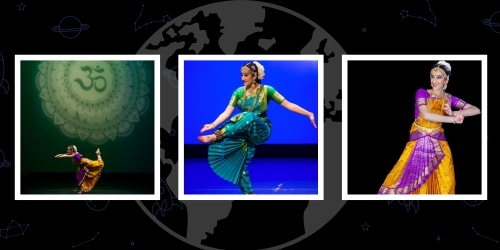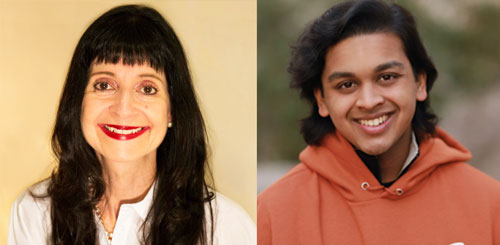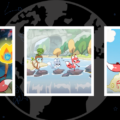今月, 観客はスクリーニングすることができます 上昇 on the Planet Classroom Network. This film is curated for Planet Classroom by KIDS FIRST! 映画祭.
上昇, directed by Eshaan Mani, is a stunning documentary following Sanjna Pandit, 高校生とバラタナティヤムダンサー, as she prepares for her debut performance. The film explores Sanjna’s personal journey of self-discovery and cultural belonging while showcasing the beauty and intricacy of the traditional dance form. With breathtaking visuals and a moving score, Ascent is an unforgettable tribute to the power of art and tradition.
Eshaan Mani is a student at The Kinkaid School in Houston, テキサス州, with a passion for writing, filmmaking, and podcasting. Through his documentaries, Eshaan hopes to provide viewers with a global perspective. 上昇 is his fourth film.
教育のためのグローバル検索 is pleased to welcome Eshaan Mani.
Ehsaan, what inspired you to make a documentary about Bharatanatyam dance, and what drew you to Sanjna Pandit’s story in particular?
Anyone who watches a Bharatanatyam performance will be enraptured by the dancers’ depth of emotion and range of motion; it’s an art form that blends dance with theater and worship. Besides my natural proclivity toward exploring and sharing my culture as an Indian-American, I have always found Bharatanatyam to be unique, beautiful, and intricate. I always wondered why so few non-Indian/Indian-Americans knew about the art, and sought an opportunity to share about it with the world through film.
When I heard my friend Sanjna was performing her arangetram, taught by Dr. Padmini Chari, who also taught Sanjna’s mother, and learned about the immense effort that went behind the process, I knew I absolutely had to tell her story.
Can you discuss your creative process in bringing the visual and musical elements of the film together to enhance Sanjna’s performance and story?
I wanted to capture the perspectives of three key individuals in Sanjna’s arangetram process — Sanjna, her mother, and her teacher — in as organic a way as possible. What better way to do so than to film them in her dance studio and the living room where so many practices happened? To supplement their oral storytelling, Sanjna provided me with a wealth of photos, some from decades ago, which I scanned and utilized in the film as b-roll. As far as music goes, I wanted to add a modern twist to traditional Carnatic rhythms, and I found a track I loved to accompany their interviews.
上昇 highlights the importance of cultural identity and the role of art in personal growth. What message do you hope viewers take away from the film?
I hope viewers learn that art has the power to cement bonds to culture, tradition, and to family members in its own unique way. I want 上昇 to make viewers reflect on where they feel the strongest sense of belonging and what activities give them a rush or make them feel at home. 最も重要なこと, I want to educate others about this beautiful art form and all that goes into the mega-performance of the arangetram.
What challenges did you face during the production of 上昇, and how did you overcome them to bring your vision to life?
Knock on wood, not much went wrong with this project. Editing 上昇 took a while, but only because I intentionally revised my pre-production spreadsheets and audiovisual strategy documents a few times so the most streamlined story could be told.
Thank you Eshaan!
C.M. Rubin and Eshaan Mani
お見逃しなく 上昇, Planet Classroom Network でストリーミング中. This film is curated for the Planet Classroom by KIDS FIRST! 映画祭.







最近のコメント